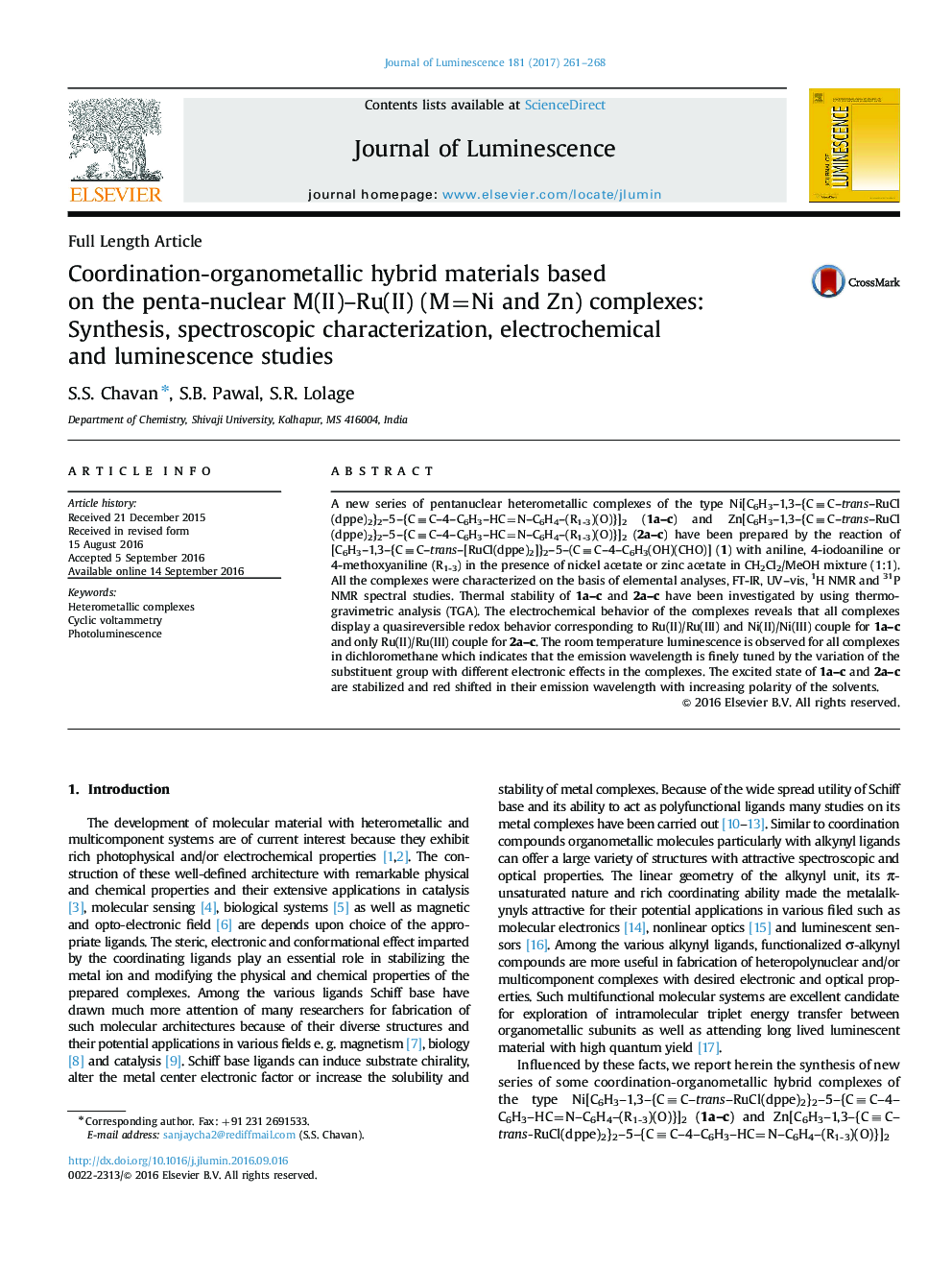| Article ID | Journal | Published Year | Pages | File Type |
|---|---|---|---|---|
| 5398039 | Journal of Luminescence | 2017 | 8 Pages |
Abstract
A new series of pentanuclear heterometallic complexes of the type Ni[C6H3-1,3-{Câ¡C-trans-RuCl(dppe)2}2-5-{Câ¡C-4-C6H3-HC=N-C6H4-(R1-3)(O)}]2 (1a-c) and Zn[C6H3-1,3-{Câ¡C-trans-RuCl(dppe)2}2-5-{Câ¡C-4-C6H3-HC=N-C6H4-(R1-3)(O)}]2 (2a-c) have been prepared by the reaction of [C6H3-1,3-{Câ¡C-trans-[RuCl(dppe)2]}2-5-(Câ¡C-4-C6H3(OH)(CHO)] (1) with aniline, 4-iodoaniline or 4-methoxyaniline (R1-3) in the presence of nickel acetate or zinc acetate in CH2Cl2/MeOH mixture (1:1). All the complexes were characterized on the basis of elemental analyses, FT-IR, UV-vis, 1H NMR and 31P NMR spectral studies. Thermal stability of 1a-c and 2a-c have been investigated by using thermogravimetric analysis (TGA). The electrochemical behavior of the complexes reveals that all complexes display a quasireversible redox behavior corresponding to Ru(II)/Ru(III) and Ni(II)/Ni(III) couple for 1a-c and only Ru(II)/Ru(III) couple for 2a-c. The room temperature luminescence is observed for all complexes in dichloromethane which indicates that the emission wavelength is finely tuned by the variation of the substituent group with different electronic effects in the complexes. The excited state of 1a-c and 2a-c are stabilized and red shifted in their emission wavelength with increasing polarity of the solvents.
Related Topics
Physical Sciences and Engineering
Chemistry
Physical and Theoretical Chemistry
Authors
S.S. Chavan, S.B. Pawal, S.R. Lolage,
